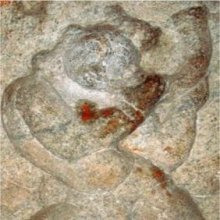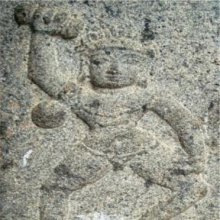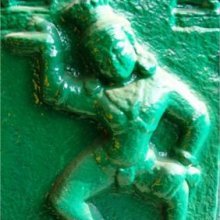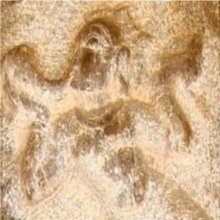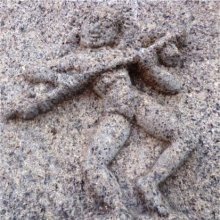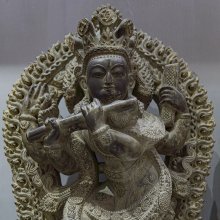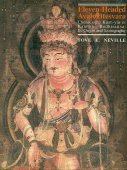Tribhanga, Tribhaṅga, Tri-bhanga, Tribhamga: 4 definitions
Introduction:
Tribhanga means something in Hinduism, Sanskrit, the history of ancient India. If you want to know the exact meaning, history, etymology or English translation of this term then check out the descriptions on this page. Add your comment or reference to a book if you want to contribute to this summary article.
Tribhanga has 3 English definitions available.
Images (photo gallery)
(+17 more images available)
Languages of India and abroad
Sanskrit dictionary
[Deutsch Wörterbuch]
Source: Cologne Digital Sanskrit Dictionaries: Böhtlingk and Roth Grosses Petersburger WörterbuchTribhaṅga (त्रिभङ्ग):—(tri + bhaṅga)
1) adj. having three bends (as have many images of Kṛṣṇa) [HAUGHT.] —
2) f. ī Name eines aus [?4 x 32] Moren bestehenden Metrums [Colebrooke II, 157 (III, 37).]
Sanskrit, also spelled संस्कृतम् (saṃskṛtam), is an ancient language of India commonly seen as the grandmother of the Indo-European language family (even English!). Closely allied with Prakrit and Pali, Sanskrit is more exhaustive in both grammar and terms and has the most extensive collection of literature in the world, greatly surpassing its sister-languages Greek and Latin.
See also (Relevant definitions)
Starts with: Tribhamgabhamgi.
Ends with: Lalitatribhanga.
Full-text: Tribhangi, Lalitatribhanga, Tribhamgabhamgi, Tiripankam, Abhanga, Parvati, Krishna, Atibhanga, Vrishabhasahitamurti, Anugrahamurti, Dvarapalaka.
Relevant text
Search found 18 books and stories containing Tribhanga, Tribhaṅga, Tri-bhanga, Tri-bhaṅga, Tribhamga, Tribhaṃga; (plurals include: Tribhangas, Tribhaṅgas, bhangas, bhaṅgas, Tribhamgas, Tribhaṃgas). You can also click to the full overview containing English textual excerpts. Below are direct links for the most relevant articles:
Gati in Theory and Practice (by Dr. Sujatha Mohan)
Gati in classical dance form of Oḍissi < [Chapter 4 - Practice of Gati]
Sculpture at its Best < [May-June, 1929]
Indian Sculpture: Orissa's Role < [April 1957]
Indian Sculpture: Orissa's Role < [April 1957]
Chaitanya Bhagavata (by Bhumipati Dāsa)
Verse 2.24.22 < [Chapter 24 - The Lord Displays His Universal Form to Advaita]
Verse 2.23.277 < [Chapter 23 - Wandering about Navadvīpa On the Day the Lord Delivered the Kazi]
Verse 3.5.237 < [Chapter 5 - The Pastimes of Nityānanda]
Jainism in Odisha (Orissa) (by Ashis Ranjan Sahoo)
Risabhanatha image at Dhabalesvara Temple, Sujanga (Madhapur) < [Chapter 3: Survey of Jaina Antiquities in Odisha]
Santinatha image at Amrutesvara Temple, Tala Beguniapada < [Chapter 3: Survey of Jaina Antiquities in Odisha]
Jaina images at Kapilesvara Temple, Nuadhana < [Chapter 3: Survey of Jaina Antiquities in Odisha]
Pallava period (Social and Cultural History) (by S. Krishnamurthy)
Dancing girls in temples < [Chapter 3 - Socio-Religious Life]
Other Gods and Goddesses < [Chapter 3 - Socio-Religious Life]
Jain Remains of Ancient Bengal (by Shubha Majumder)
Pañca-tīrthika type of Candraprabha sculptures < [Chapter 6 - Iconographic Study of Jaina Sculptural Remains]
Śāsanadevīs or Yakṣiṇīs from Ancient Bengal < [Chapter 6 - Iconographic Study of Jaina Sculptural Remains]
Planetary Deities type of Ṛṣabhanātha Sculptures < [Chapter 6 - Iconographic Study of Jaina Sculptural Remains]
Related products
